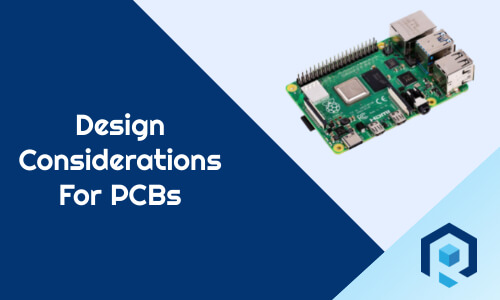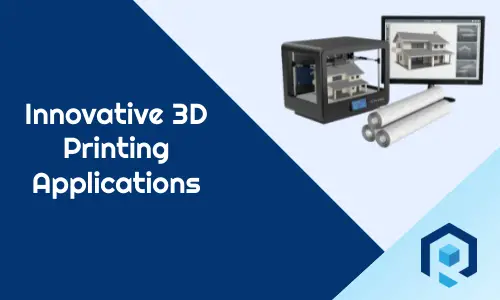In this digital world, there is hardly anyone who does not hear about microprocessors and microcontrollers. Unfortunately, most of them think that Microprocessor and microcontroller are the same. But that’s not correct.
There is a huge difference between microcontroller vs microprocessor. Let’s find out the key difference between microprocessor vs microcontroller in this article. At the end of this article, there is a PDF link so that you can download a microprocessor vs microcontroller PDF copy for your future reference.
As a Mechanical Engineer, you may hardly get into designing a microprocessor or a microcontroller, but a piece of basic knowledge is always required as nowadays mechanical instruments use electronic hardware extensively.
After all, machines are getting smarter day by day. So in this article, I will try to give you a basic overview of the differences between Microprocessor vs Microcontroller.
What Is A Microprocessor (MPU)
A microprocessor or Micro Processing Unit (MPU) is an integrated chip ( IC) which has the central processing unit ( CPU ). A microprocessor does not have any RAM, ROM, or any other peripherals in it. The system engineer has to add those separately. A microprocessor alone can not do any I/O job. It needs all the required peripheral to be attached before it can function.
![Difference Between Microprocessor Vs Microcontroller [PDF] 1 Microprocessor Vs Microcontroller](https://www.riansclub.com/wp-content/uploads/2020/08/microprocessor-vs-microcontroller-1024x678.jpg)
A typical example of a microprocessor is Intel i3, i5, i7, AMD Ryzen, etc in desktops and processors used in a cell phone or in any device. Just remember that, if the input and output are not predefined, then we have to use a microprocessor.
What Is A Microcontroller ( MCU)
Microcontroller or Micro Controlling Unit ( MCU ) is kind of a compact computer that integrates all peripherals like RAM, ROM, and other peripherals in a single chip. A microcontroller alone can do all defined tasks. What that means is that a microcontroller can only be used in those applications where the input and output logic is defined.
![Difference Between Microprocessor Vs Microcontroller [PDF] 2 Microprocessor Vs Microcontroller](https://www.riansclub.com/wp-content/uploads/2020/04/microcontroller-1.jpg)
Some examples of a microcontroller can be your mouse, keyboard, your home appliances like TV, Refrigerator, washing machine, etc. You may notice that in all those devices inputs and outputs are defined. However, I saw some TV models which use microprocessors and you can install any app in that. So in those TV’s input and output is not defined and use microprocessors
Difference between Microprocessor Vs Microcontroller
We will figure out differences between microprocessor and microcontroller based on following criteria.
- Structural differences
- Operational differences
- Connectivity differences
- Power consumption differences
- Application differences
Structural Differences
As I said already that a microprocessor can not do a job alone. It needs all peripherals to be connected. Due to that, the system becomes bulky. But that is not always true. Looks at the smartphones. A whole lot of peripherals and microprocessors are assembled into a cramped space. But if you compare with microcontrollers, certainly it takes more space.
Now if you think about powering up a device with a microprocessor, you need different voltage power rails for different peripherals. That makes the system more complicated.
If you think about a microcontroller which is kind of an embedded system that integrates everything in a single chip. With a single chip, it can do all its job. So the system can be made more compact. On top of that microcontrollers needs only a single voltage power rail. So the system will be simple in design.
Operation Differences
The microprocessor does not have RAM inbuilt. So when it gets an input, the external DRAM starts executing and then internal ROM comes into the picture. Due to this process microprocessors take time to give output. Obviously, the time is so short that you can’t even notice but compare to a microcontroller, a microprocessor is a bit slow to respond. The good part of the microprocessor-based system is that if you want you can expand the capacity of RAM or other peripherals.
On the other hand, microcontrollers have inbuilt flash memory which is very fast to respond. So the start-up time and execution time is much shorter. The only problem is that the memory limit is finite. But that makes sense when you know how much memory your system can consume and accordingly you can design the system
Connectivity Differences
Connectivity peripherals like USB, Bluetooth, Wi-Fi, Ethernet are key to the microprocessor-based system. Especially when you need a system that could offer a large amount of data transfer and extensive OS-based operation, the microprocessor-based system is the only option. You have the flexibility to add different interfaces that you may need for your application
The microcontroller also comes with all required connectivity peripherals. When I use the term ” Required” what that means is that you won’t be having any option to add later any peripherals if you need to. That limits the flexibility. Ideally, microcontroller connectivity interfaces are not designed to handle high input-output and high amount of data transfer.
Power consumption difference
As I already said that microprocessor needs all peripherals to be assembled. All peripherals need different voltage power rail which leads to more power consumption.
In a microcontroller-based system, all peripherals are integrated and act as a single chip. So ideally a microcontroller consume less power compare to a microprocessor
Application differences
When you need to run resource-hungry applications and you are sure that the output is not defined, then a microprocessor should be used. Microprocessor often uses an operating system to work which itself consumes most of its resources. A typical example is our desktop computers.
Microcontrollers are used in embedded systems and only does the job for which it is programmed. The input and output are defined and ideally suited for that specified job only. A typical example is our refrigerator or washing machines or microwave etc.
Microcontroller Vs Microprocessor Table
| Microcontroller | Microprocessor |
|---|---|
| A microcontroller is the heart of an embedded system | A microprocessor is the heart of a computer system |
| All peripherals are embedded into a single chip | All peripherals need to to connected separately |
| The circuit can be simple and compact | The circuit is complex and bulky |
| Low power consumption | High high consumption |
| Single voltage power rail is enough | Different voltage power rail is required |
| Uses flash memory to execute programs | Uses external RAM to execute programs |
| Can be used in a compact system and hence efficient | Can not be used in a compact system and hence not efficient |
| The input and output is defined | The input and output is not defined |
| Cost of the system is low | Cost of the system is higher than microcontrollers |
| Used in refrigerators, washing machines | Used in personal computers, mobile phones |
Conclusion: Microprocessor vs Microcontroller
Both microprocessors and microcontrollers have their advantages and disadvantages. When deciding between the two, you need to look for what application you want to use that. If you see that your system has defined input and output, then you should use a microcontroller. If you feel that the input and output are not defined they you should go for a microprocessor.
This is a very short overview of microprocessor vs microcontroller. This is more of giving you a heads up about these two critical systems. I did not cover the technical part of it as because as a mechanical engineer you may not need that. If you do have some questions or queries, then do write in the comment section and I will honor your queries. You are also welcome to suggest anything that you feel needs to be added.
Frequently Asked Questions ( FAQ)
What is a Microprocessor?
A microprocessor is an integrated chip that needs peripherals like RAM, ROM connected to execute a task. You need to connect those peripherals separately.
What is a Microcontroller?
A microcontroller is an integrated chip that has all peripherals integrated into it. No need to connect peripherals separately
Microprocessor vs Microcontroller : Which one to use?
That depends on your application. If the input and output are defined, use a microcontroller. If not use a microprocessor
What are few example of microprocessor based system?
Desktop, Laptop, Cell Phone, Smart watch, Smart TV
What are few examples of microcontroller based system?
Microwave, Washing machine, refrigerator,



